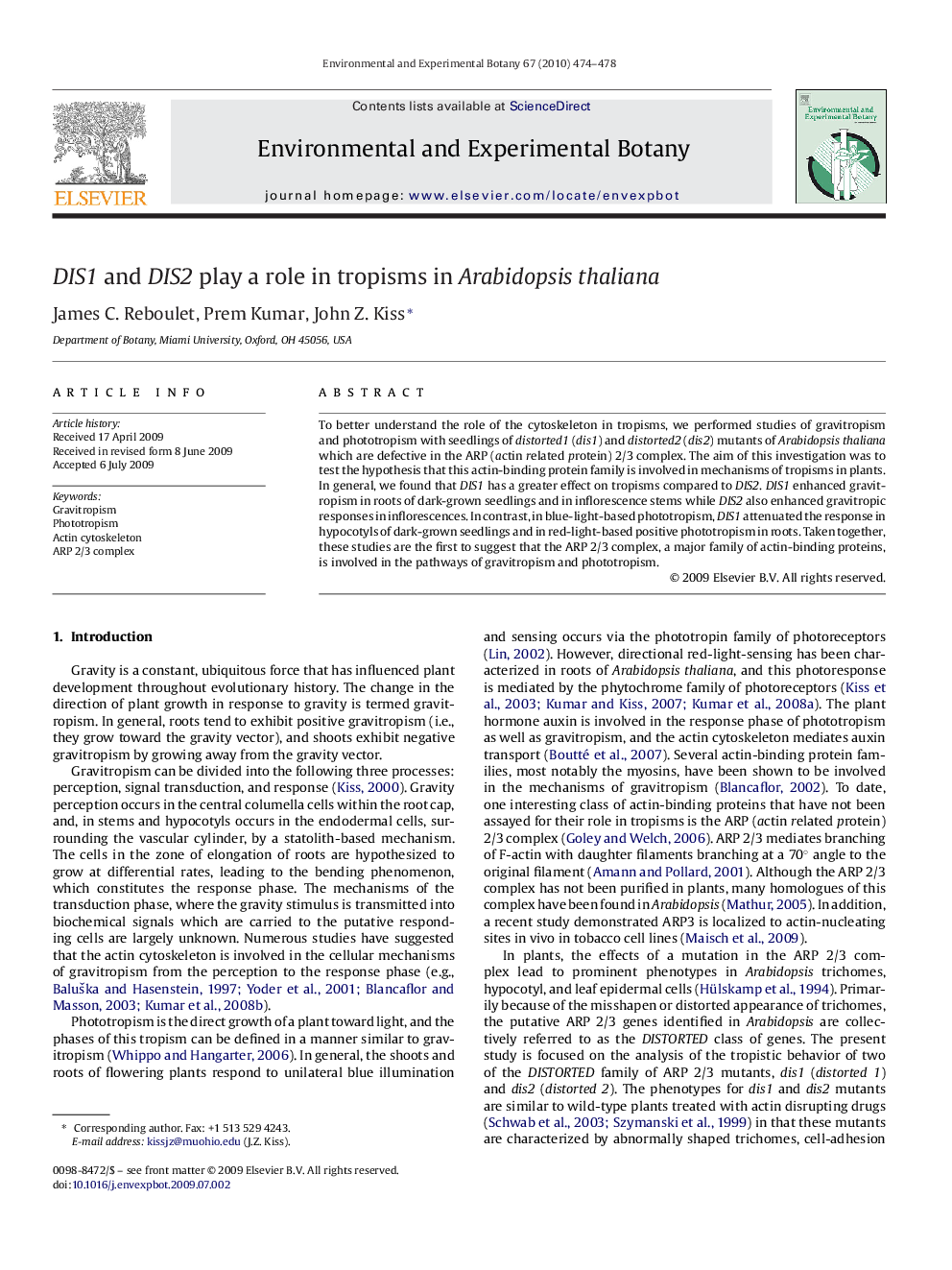| Article ID | Journal | Published Year | Pages | File Type |
|---|---|---|---|---|
| 4555098 | Environmental and Experimental Botany | 2010 | 5 Pages |
Abstract
To better understand the role of the cytoskeleton in tropisms, we performed studies of gravitropism and phototropism with seedlings of distorted1 (dis1) and distorted2 (dis2) mutants of Arabidopsis thaliana which are defective in the ARP (actin related protein) 2/3 complex. The aim of this investigation was to test the hypothesis that this actin-binding protein family is involved in mechanisms of tropisms in plants. In general, we found that DIS1 has a greater effect on tropisms compared to DIS2. DIS1 enhanced gravitropism in roots of dark-grown seedlings and in inflorescence stems while DIS2 also enhanced gravitropic responses in inflorescences. In contrast, in blue-light-based phototropism, DIS1 attenuated the response in hypocotyls of dark-grown seedlings and in red-light-based positive phototropism in roots. Taken together, these studies are the first to suggest that the ARP 2/3 complex, a major family of actin-binding proteins, is involved in the pathways of gravitropism and phototropism.
Related Topics
Life Sciences
Agricultural and Biological Sciences
Ecology, Evolution, Behavior and Systematics
Authors
James C. Reboulet, Prem Kumar, John Z. Kiss,
